Digital Gex
Banned
Knowledge Deck will be a series that aims to remove decades of misinformation that has spread in the video game industry, as well as present facts the average gamer doesn't know. This series will be fun and educational for all ages.
The Compact Disc Interactive or CD-i (Commonly ignorantly named 'The Philips CD-i' as if it were a singular media device), is often considered to be a games console, a bad one at that, and is the most trashed gaming platform of all time due to years of misinformation, YouTube click-bait content, and fanatics taking over sites like Wikipedia back when it was still taken seriously. It's usually ridiculed for it's Nintendo titles, although imo Hotel Mario isn't really a bad game, leaving the other 120 releases to lay forgotten..
The Cd-i is actually an optical media format, one that would ultimately birth Video CDs and provide the base for DVD technology years later. How advanced was the CD-i? It was able to produce high-quality video, high-fidelity stereo audio, allow for '500 degree' interactivity according to their ads, and load faster than a standard CD. This was during a time CDs were still building toward becoming the standard format, and still had limited applications. The CD-i optical discs would work in tandem with CD-i compatible machines which varied in strengths and weaknesses. Philips made the majority of CD-i machine models, but several were produced by 3rd party manufacturers such as LG and Sony. Sony's Cd-i machine was also their first piece of hardware in the interactive space.
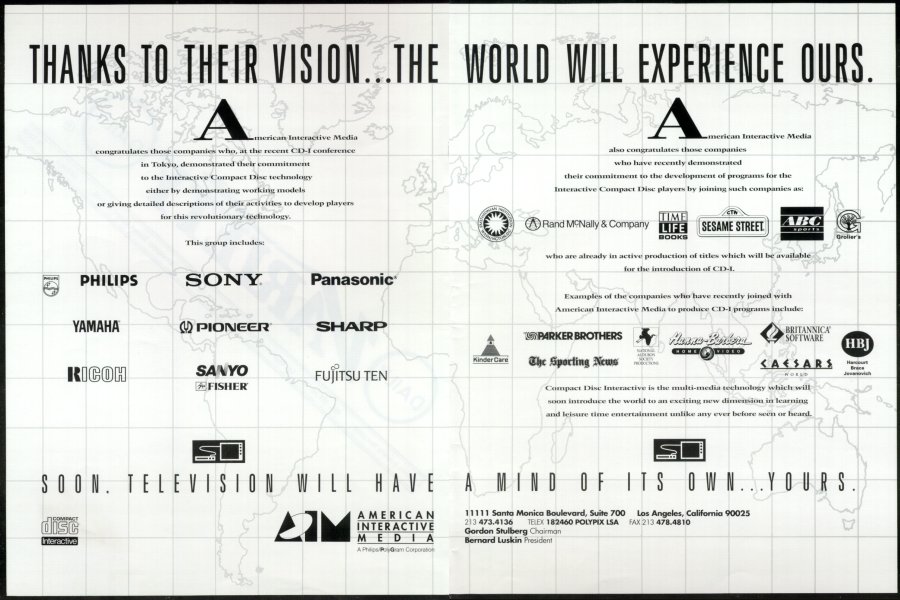
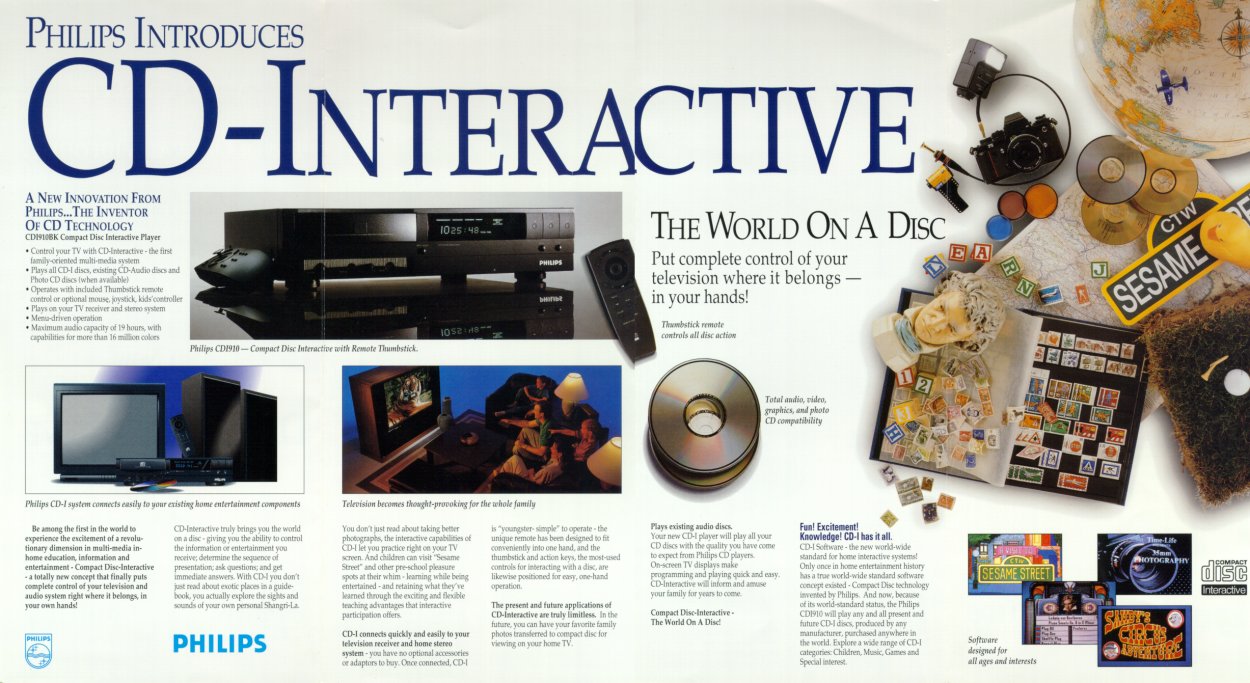
The CD-i had numerous partners which insured it launched with an abundance of software and hardware choices, initially.
Perspective is important when looking at CD-i' machines, If you look at it as a games console it would seem expensive since usually consoles were cheap and software was expensive, while CD-i machines where the reverse of that. You have to consider the fact the CD-i models were more than gaming consoles, they were your movie players, your photo editors, and your audio players. Later in 1994, it would become your personal computer for hundreds of dollars less that the competition, and in 1996 your gateway to the WWW.
CD-i machines only sold 2 million units, selling the first million by 1995 4 years after release. For expensive hardware that was supposed to take over the living room and sell tens of millions like VCR's, that's not a good number. Phillips actually lost billions trying desperately to make the CD-i profitable within the 7 years it was on the market. It did however still reach a significant number of people, and revolutionized multimedia. It was also a pretty rad gaming console.





As someone who owned three CD-i machines, I can give some perspective. Cd-i machines were my primary entertainment and computing devices for 3 years. I played games on them,, I watched movies on them such a Terminator and Rambo, I've also used it as my computer for spreadsheets. I don't have it anymore but there was a software disc that specialized on creating spreadsheets, which you could print out by inserting a cable through the back of your CD-i connecting it to compatible printers. It was also my first WWW enabled computer before I got my first PC. I could email, browse online with a fully functional web browser, and subscribe for demos and sales promotions.

How you ask? in 1996 Phillips released Web-i (CD-Online in Europe) a service that allowed users to access the WWW from their CD-i's through a special modem for the first time on your TV. Some later CD-i models had the modem bundled inside the box like the Cd-i 740 that I was able to buy on clearance from an ignorant mom & pop shop.
 (740, one of the most powerful models )
(740, one of the most powerful models )
With a subscription, you could receive updates on upcoming software, access the news, view your stock options, or get early updates for the integrated web browser. What may be surprising is the service worked much better than expected, as a result, it was my primary WWW device until I received my first PC in 1998. The Web-i service also introduced the worlds first globally accessible online multiplayer game, Ram Raid. There were actually two games made for the service, the second being a racing game, but it seems to have been lost to time.

Ram Raid was an innovative title that allowed anyone around the world to play each other in a FPS battle arena. Sadly, while several users did play it, many CD-i owners were not able to enjoy this title due to many players owning older hardware models that did not have the specs to run the game. Others had dirt cheap models that could not be expanded upon, so they couldn't install the Digital Video Cartridge which was required to operate the game.
Luckily, a longer story driven version of Ram Raid, with improved graphics, physics, and audio, was released as a stand-alone game renamed 'Atlantis: The Last Resort'. It's also one of the few games showcasing the full graphical capabilities of the stronger CD-i model chipsets. It still required a DVC though.

Overall the Cd-i was an innovative format, and the machines were some of the greatest multimedia devices you could buy. If Phillips had released the cheaper models sooner things might have been different. It took Phillips until 1993 to widely release a model that would compete directly with home video game consoles, the CD-i 450.
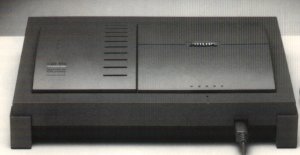 (450, priced to compete with gaming consoles)
(450, priced to compete with gaming consoles)
The 450 was shipped in 1993 in the US and Europe, 1994 in other parts of the world. It was a top loading system with many features and components removed to make the cost as low as possible. Unfortunately, this meant later more intensive games had issues running on this model or in some cases, couldn't run at all. Phillip made a second attempt at a cheap model this time including all the bells and whistles, but that didn't release until late 1994.
If Phillips had released cheaper players sooner, and had a wider audience when they released the Web-i internet service, the gaming and media industries might have turned out much differently.
Extras and stuff
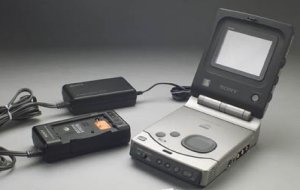 (Sony Intelligent Discman Cd-i)
(Sony Intelligent Discman Cd-i)
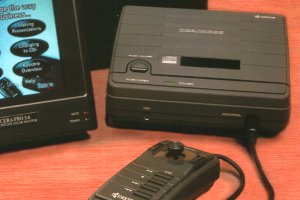 (Kyocera Cd-i with exclusive joystick controller)
(Kyocera Cd-i with exclusive joystick controller)
(Interactive Touchpad)
(PCD Light Stick)
(PCD Thumbstick)
 (Interactive Gamepad)
(Interactive Gamepad)
 (Keyboard, named 'KeyControl')
(Keyboard, named 'KeyControl')
The Compact Disc Interactive or CD-i (Commonly ignorantly named 'The Philips CD-i' as if it were a singular media device), is often considered to be a games console, a bad one at that, and is the most trashed gaming platform of all time due to years of misinformation, YouTube click-bait content, and fanatics taking over sites like Wikipedia back when it was still taken seriously. It's usually ridiculed for it's Nintendo titles, although imo Hotel Mario isn't really a bad game, leaving the other 120 releases to lay forgotten..
The Cd-i is actually an optical media format, one that would ultimately birth Video CDs and provide the base for DVD technology years later. How advanced was the CD-i? It was able to produce high-quality video, high-fidelity stereo audio, allow for '500 degree' interactivity according to their ads, and load faster than a standard CD. This was during a time CDs were still building toward becoming the standard format, and still had limited applications. The CD-i optical discs would work in tandem with CD-i compatible machines which varied in strengths and weaknesses. Philips made the majority of CD-i machine models, but several were produced by 3rd party manufacturers such as LG and Sony. Sony's Cd-i machine was also their first piece of hardware in the interactive space.


The CD-i had numerous partners which insured it launched with an abundance of software and hardware choices, initially.
Perspective is important when looking at CD-i' machines, If you look at it as a games console it would seem expensive since usually consoles were cheap and software was expensive, while CD-i machines where the reverse of that. You have to consider the fact the CD-i models were more than gaming consoles, they were your movie players, your photo editors, and your audio players. Later in 1994, it would become your personal computer for hundreds of dollars less that the competition, and in 1996 your gateway to the WWW.
CD-i machines only sold 2 million units, selling the first million by 1995 4 years after release. For expensive hardware that was supposed to take over the living room and sell tens of millions like VCR's, that's not a good number. Phillips actually lost billions trying desperately to make the CD-i profitable within the 7 years it was on the market. It did however still reach a significant number of people, and revolutionized multimedia. It was also a pretty rad gaming console.





As someone who owned three CD-i machines, I can give some perspective. Cd-i machines were my primary entertainment and computing devices for 3 years. I played games on them,, I watched movies on them such a Terminator and Rambo, I've also used it as my computer for spreadsheets. I don't have it anymore but there was a software disc that specialized on creating spreadsheets, which you could print out by inserting a cable through the back of your CD-i connecting it to compatible printers. It was also my first WWW enabled computer before I got my first PC. I could email, browse online with a fully functional web browser, and subscribe for demos and sales promotions.

How you ask? in 1996 Phillips released Web-i (CD-Online in Europe) a service that allowed users to access the WWW from their CD-i's through a special modem for the first time on your TV. Some later CD-i models had the modem bundled inside the box like the Cd-i 740 that I was able to buy on clearance from an ignorant mom & pop shop.

With a subscription, you could receive updates on upcoming software, access the news, view your stock options, or get early updates for the integrated web browser. What may be surprising is the service worked much better than expected, as a result, it was my primary WWW device until I received my first PC in 1998. The Web-i service also introduced the worlds first globally accessible online multiplayer game, Ram Raid. There were actually two games made for the service, the second being a racing game, but it seems to have been lost to time.

Ram Raid was an innovative title that allowed anyone around the world to play each other in a FPS battle arena. Sadly, while several users did play it, many CD-i owners were not able to enjoy this title due to many players owning older hardware models that did not have the specs to run the game. Others had dirt cheap models that could not be expanded upon, so they couldn't install the Digital Video Cartridge which was required to operate the game.
Luckily, a longer story driven version of Ram Raid, with improved graphics, physics, and audio, was released as a stand-alone game renamed 'Atlantis: The Last Resort'. It's also one of the few games showcasing the full graphical capabilities of the stronger CD-i model chipsets. It still required a DVC though.

Overall the Cd-i was an innovative format, and the machines were some of the greatest multimedia devices you could buy. If Phillips had released the cheaper models sooner things might have been different. It took Phillips until 1993 to widely release a model that would compete directly with home video game consoles, the CD-i 450.

The 450 was shipped in 1993 in the US and Europe, 1994 in other parts of the world. It was a top loading system with many features and components removed to make the cost as low as possible. Unfortunately, this meant later more intensive games had issues running on this model or in some cases, couldn't run at all. Phillip made a second attempt at a cheap model this time including all the bells and whistles, but that didn't release until late 1994.
If Phillips had released cheaper players sooner, and had a wider audience when they released the Web-i internet service, the gaming and media industries might have turned out much differently.
Extras and stuff


(Interactive Touchpad)
(PCD Light Stick)
(PCD Thumbstick)


